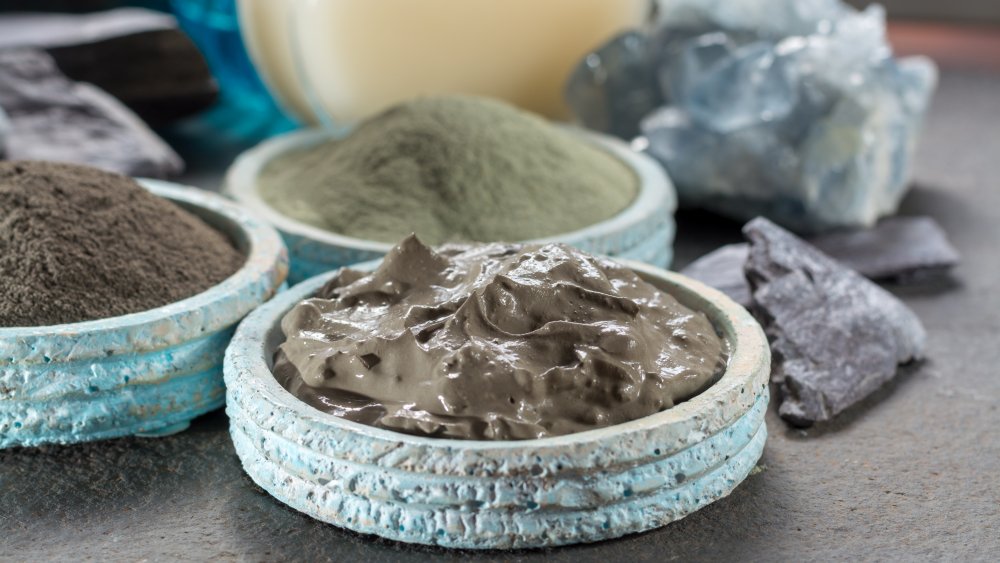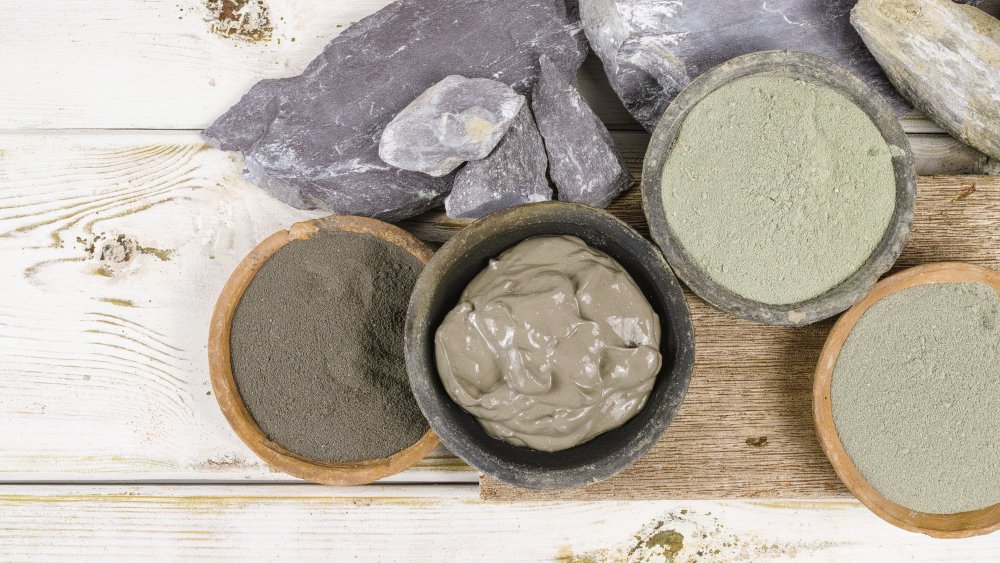Cosmetics Were Often Deadly In Ancient Greece. Here's Why
When one considers the ancient and often deadly history of cosmetics, Egyptians are usually the people who come to mind, particularly the heavy eyeliner seen in countless Cleopatra onscreen portrayals and Halloween costumes. According to NBC News, Egyptians were probably the first to use minerals like malachite (copper), galena (lead), and kohl ("fatty matter and metal (usually lead, antimony, manganese or copper))" as makeup. Using these substances around the eyes leads to " irritability, insomnia and mental decrease," Dr. Joel Schlessinger, a dermatologist, told NBC.
Per the Ancient History Encyclopedia, the word cosmetics comes from the Greek word kosmetika, although they used it to refer to "preparations which protected hair, face, and teeth." Ancient Greeks took the cosmetic use of dangerous lead a step further, favoring a white lead face cream that was meant to clear up blemishes and even the tone and texture of skin. Unfortunately, lead causes health problems ranging from infertility to dementia, but the Greeks were trend-setters with their use of it as a face mask or foundation.
Ancient Romans used both white and red leads to make up their faces, and the "dead white" look continued to be popular into the 18th century. Its use actually caused disfigurement. Kevin Jones of the Fashion Institute of Design and Merchandising Museum explained to NBC News: "It would eat the skin away, causing all sorts of scarring. And the way they covered that up was to apply thicker amounts of the makeup, which would then exacerbate the situation."
'Poisonous by inhalation and ingestion'
Greek women used red ochre and dye extracted from lichen for rouge, kohl eyeliner, and eyebrow color "which contained soot, antimony, saffron or ash." One popular eyeliner was derived from the element antimony, which according to Nature is "poisonous by inhalation and ingestion," as well as carcinogenic. Nevertheless, Greeks used it not just to define their eyes but as a skin medication as well.
Amid all the ingredients that turned out to be poisonous, some cosmetics used in Ancient Greece sound similar to some modern cosmetics. The Ancient History Encyclopedia reports that Greek people enjoyed perfume made via infusing oil with "plants, flowers, spices, and fragrant woods from myrrh to oregano." They used ash to clean their teeth and turned to snail ash to fade freckles, lanolin to moisturize, and lizard excrement to treat wrinkles.
Snail mucin, or excrement, has made a modern comeback as a popular skin care ingredient. Women's Health noted its hydrating properties and suggested skin can be "softer, more moisturized and glowing with consistent use of snail mucin."

